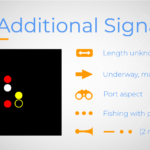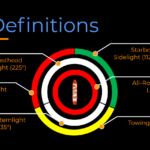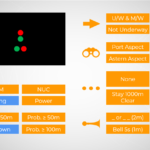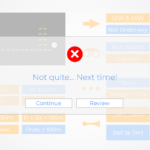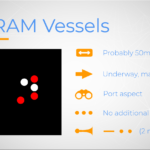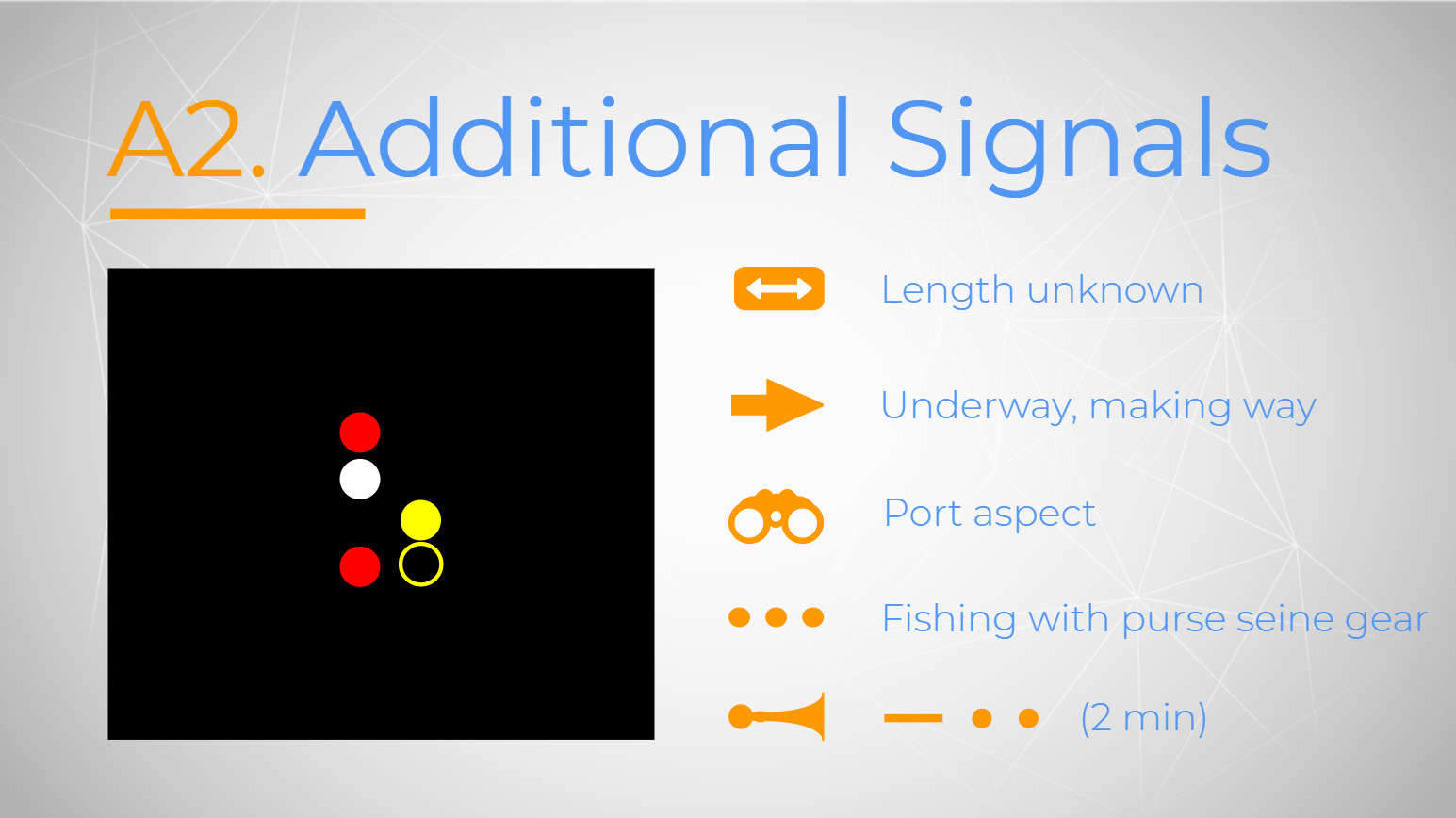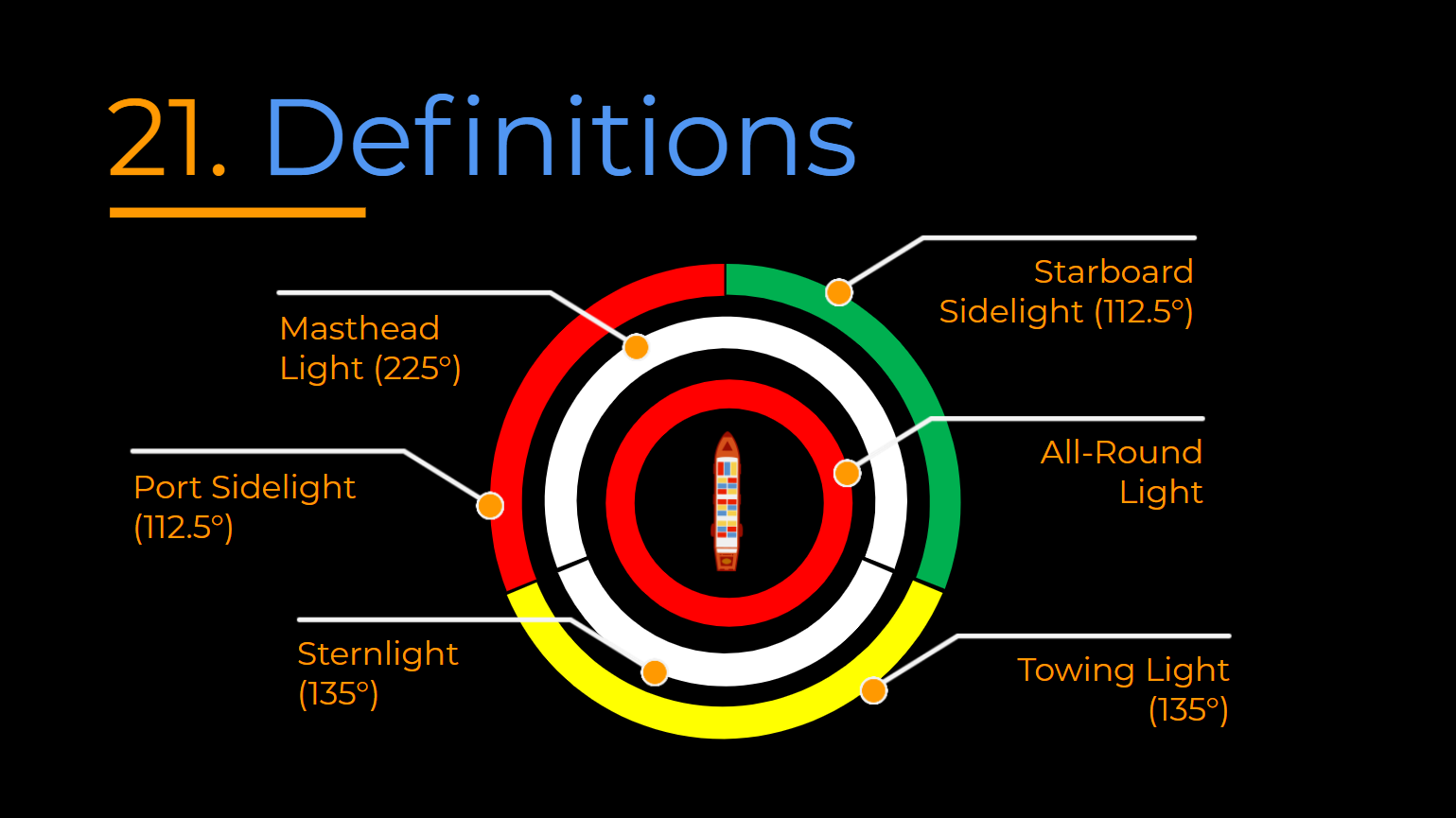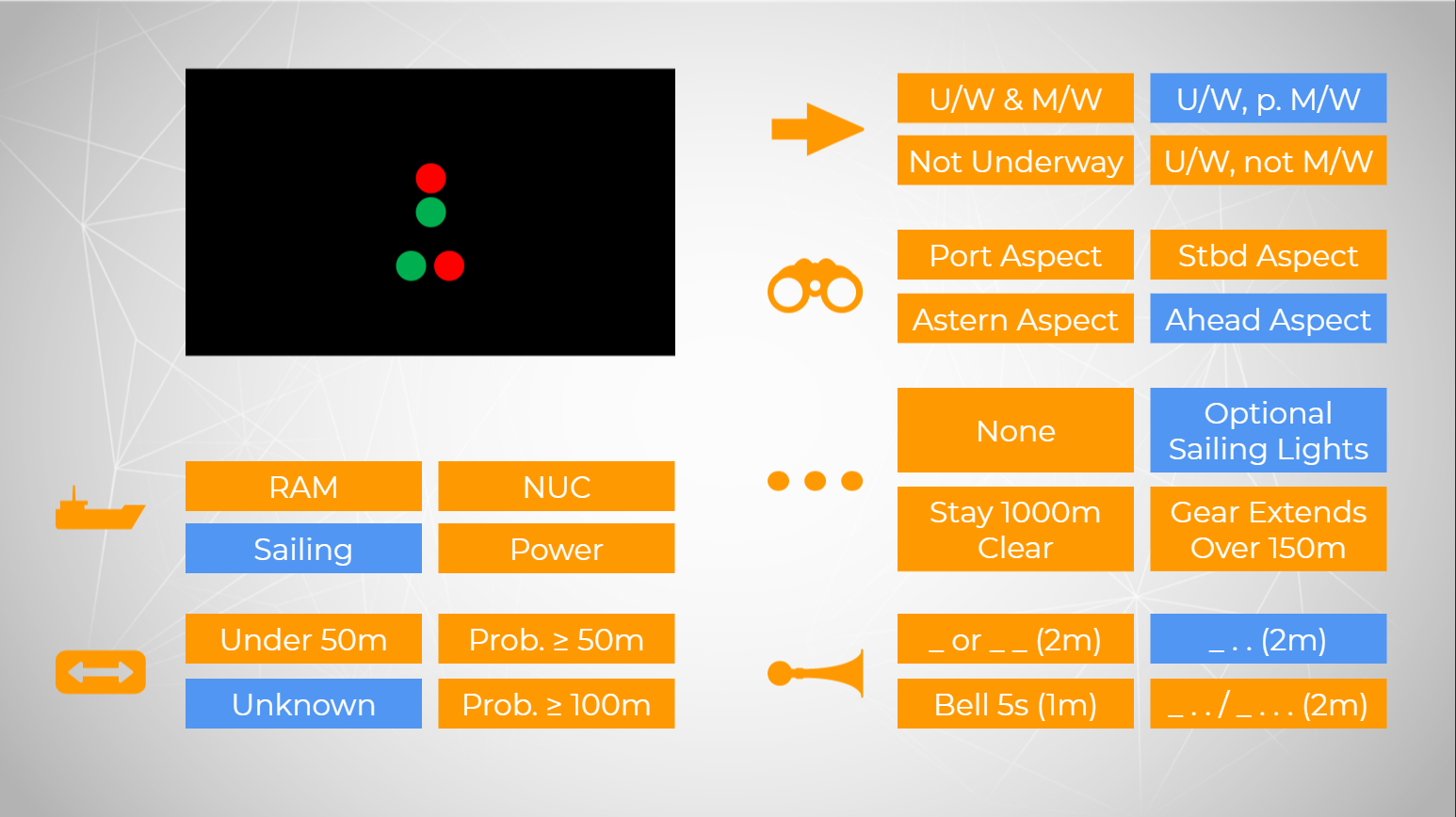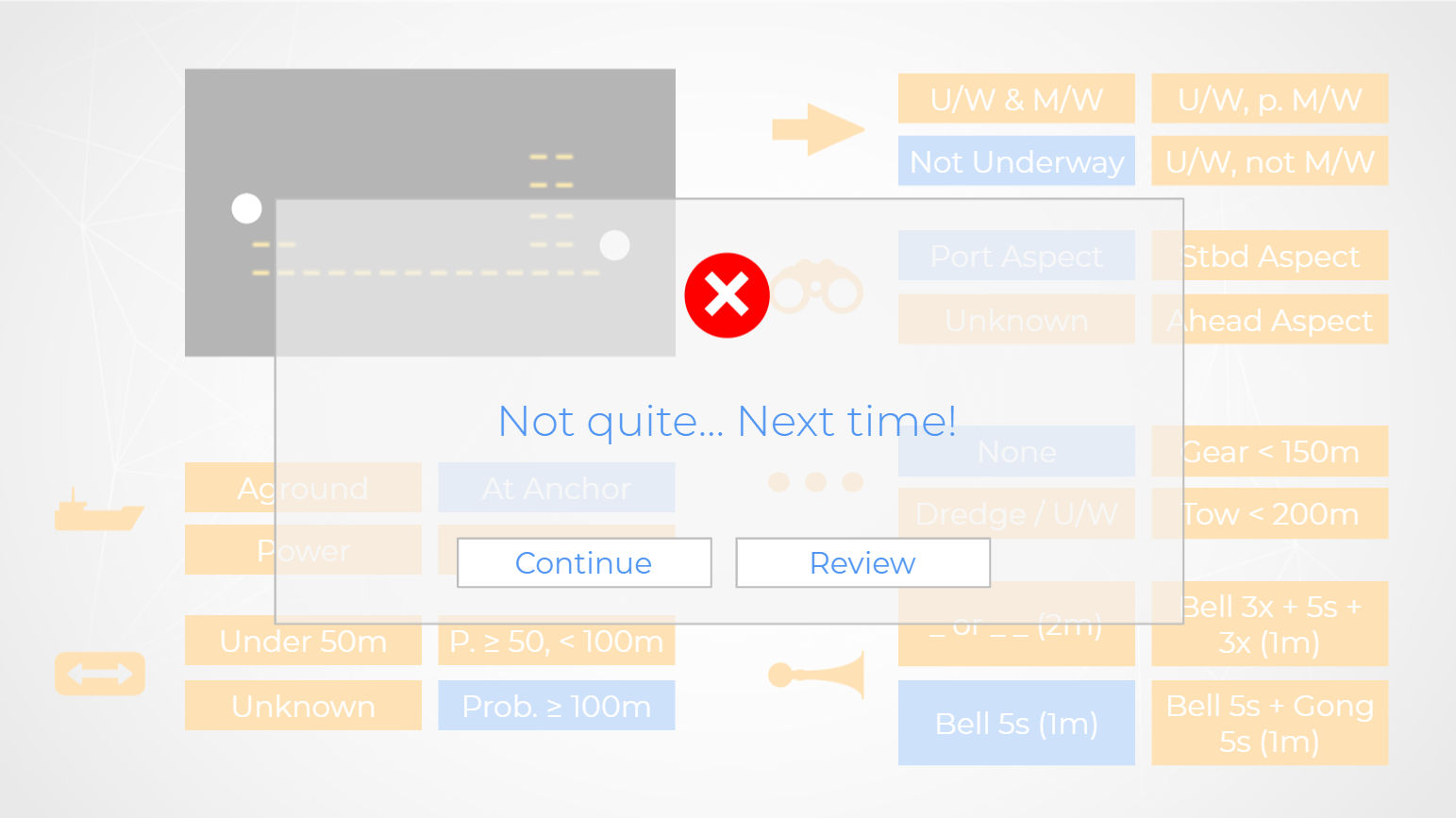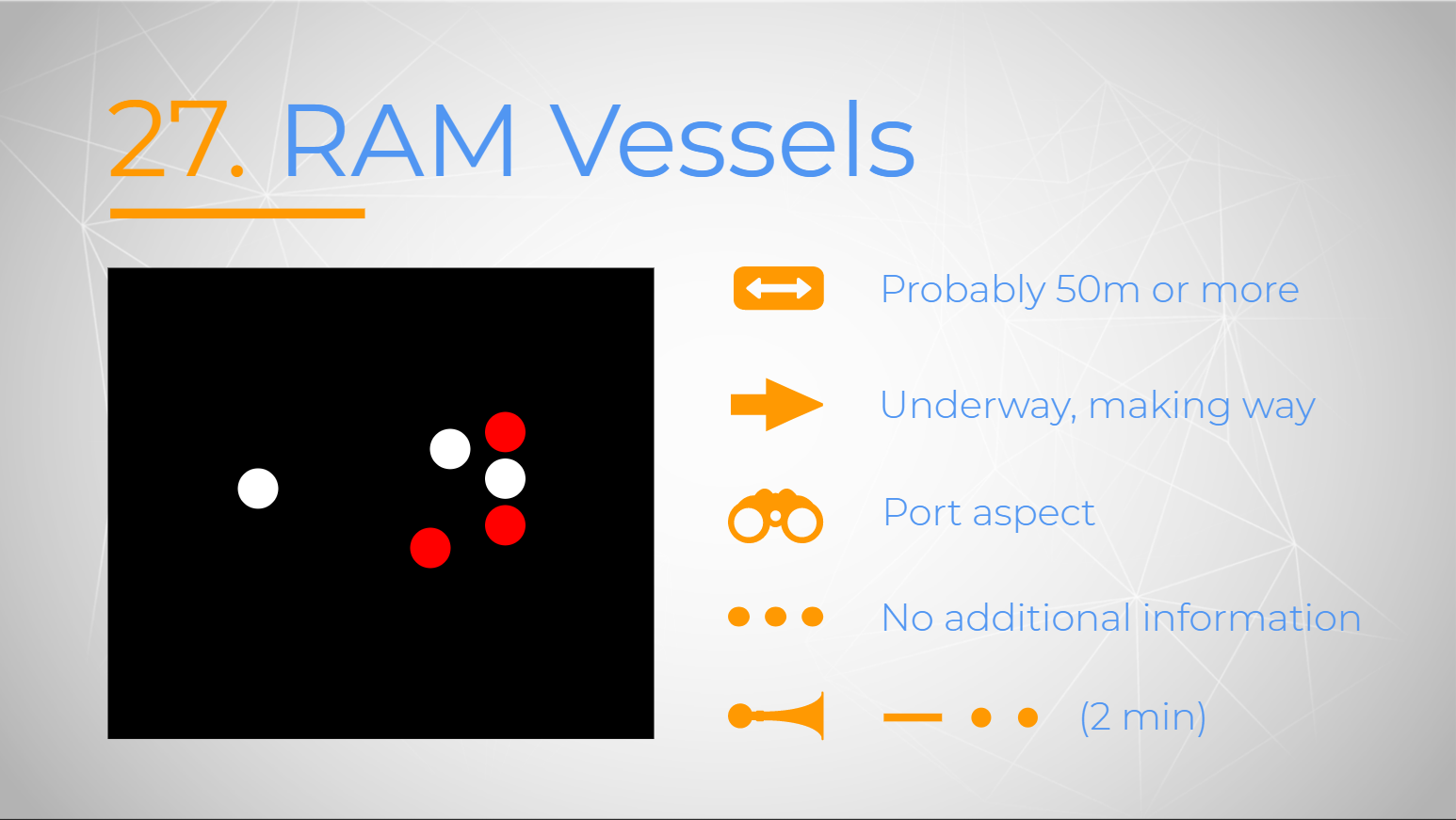How to Answer COLREGs Lights Questions.
Your answers need to be confident, concise & precise.
One of the first COLREGs questions that you’ll get in your MCA oral exam is light recognition. This can often feel very intimidating but don’t worry; with some structure and these key tips, you’ll smash it!
Like everything in the way we teach MCA orals prep, structure is key. It’s all very well and good knowing the answer, but this is an oral exam so getting the answer across confidently, concisely and precisely is critical. Although there are a few exceptions that you’ll just need to remember, we can break the rest down into memorable groups.
Decide on an order… and stick to it.
There are normally four components to a lights answer. They are vessel type, length, motion and aspect. Some have additional information, such as a vessel engaged in fishing with outlying gear in excess of 150m, and this can be added on the end. Finally, we can pop the restricted visibility sound signal on the end.
The only one that really makes sense to go first is vessel type but, after that, arrange the other ones however you feel most comfortable. The key thing is that you never change that order. That way, the next part of the answer is always on the tip of your tongue and you’re not having to try to remember which ones you’ve already said.
This may seem a bit silly but, when the pressure is on, making things as automatic as possible can be a lifesaver.
One of the first COLREGS questions that you’re likely to get in your MCA oral exam is light recognition.
– Paul Naranjo-Shepherd
Vessel type
This is fairly simple really and just requires you to learn which arrangements of lights are which type of vessel. There are some vessel types with clear ID lights, such as RAM, NUC, Vessel Engaged in Fishing/Trawling (VEIF/VEIT), etc. Others, such as Power-Driven Vessels (PDVs) can be recognised because they have masthead lights without any other ID lights. Sailing Vessels have only sidelights without anything else (although they can display red over green, if they want to).
Generally it’s pretty clear cut what the vessel type is, but there are a few oddities. You need to be careful with a Vessel Constrained By Draught because it’s also (and can only be) a PDV (it says so in the definition in Rule 3). Also, a Towing Vessel must also be a PDV (Rule 24a & c) and, this is where it gets weird, a Towing Vessel that’s RAM is ALSO a PDV (Rule 27c).
Ok… so we headed into the weeds a bit there, but you get the point.
Length
The number of masthead lights that a vessel is displaying determines its length. For a PDV (Rule 23), if there’s one masthead light then the vessel is “less than 50m in length”. If there’s two it’s “probably 50m or more” because a vessel less than 50m can also display two if it wants to (Rule 23aii). This also applies with RAM, Towing and CBD. If you saw any of them from astern, you can’t determine length. If you can’t, just say “length unknown”; it sounds better than leaving it out.
For VEIF, Sailing Vessels or NUC, you can’t ever determine length because they don’t show masthead lights. VEIT have a weird thing where they display ONE masthead light above and abaft the ID lights and, if they do, they are “probably over 50m”. There are a couple of oddities but that’s the overview.
Structure is key in the MCA oral examination. Choose an order for your answer and stick to it!
– Paul Naranjo-Shepherd
Motion
We can determine how a vessel is moving or not moving on a scale, of sorts. If a vessel isn’t alongside, at anchor or aground, then it is “underway” (Rule 3i). For some vessels, we can tell if they are definitely making way (moving through the water) and for others we can’t.
NUC, RAM, VEIF and VEIT are “making way” if they are displaying sidelights/stern lights and are “not making way” if they aren’t and you can only see the ID lights (and the masthead lights for RAM and, sometimes, VEIT). The ones for which we can’t tell, such as PDVs, Sailing Vessels, etc. we just say “probably making way”. Again, this is a little simplified and there are some exceptions, so make sure you check the rules in detail when you’re working these out.
Aspect
Finally, a simple one! If you see a red or green sidelight, it’s “port/stbd aspect”, a sternlight gives you “seen from astern” and both sidelights gives you “seen from ahead”. If you’re seeing it almost ahead (with the masthead lights nearly in line) you can say “seen fine on the port/stbd bow”.
Sound signal
Restricted visibility sound signals under Rule 35 are fairly simple, although there are a few extra bits that I won’t mention here. PDVs sound one prolonged blast if they are underway and making way, and two prolonged blasts if they are stopped in the water.
Pretty much everything else that’s underway sounds one prolonged blast followed by two short blasts. The awkward one for vessels which are underway is a tow; the towing vessel sounds one prolonged followed by two short and then the tow sounds one prolonged followed by three short, if manned. All of those are at intervals not exceeding two minutes.
Vessels which are at anchor and aground sound a combination of bell and gong signals to reveal their location. This can be complicated but it’s not too bad if you think of it as cumulative; an anchored vessel under 100m in length rings a bell for about five seconds each minute.
If it’s over 100m, the bell is sounded forward and immediately followed by five seconds of ‘gonging’ (not a technical term). If the vessel is aground, then three distinct strokes on the bell are added before and after the five seconds of ringing of the bell.
The right tool for the job.
Knowing your lights inside and out is vital but don’t get too hung up on using exactly these words. Some lecturers/tutors have slightly different wordings and while some get very excited about it, mostly it doesn’t matter too much.
A good example of this is the entirely pointless argument around using possibly vs. probably. No, it doesn’t matter which one you say, but we prefer probably.
The key thing is to make sure that you’re confident with your lights. Then, practice answering concisely and precisely, so the examiner in no doubt that you know exactly what you’re talking about. Then, you pass. Simple.
To get you there, I cannot recommend our Interactive COLREGs Course enough. As well as going through all of the COLREGs in a simple yet comprehensive way, it also has a section on lights and shapes. That section not only explains everything that you need to know about every light in the COLREGs, it also lets you test yourself until you are completely confident. There’s even a free sample!
Don’t forget, we’re on your side.
Cheers,
Paul

